The Tower of London: England’s Haunted Monument
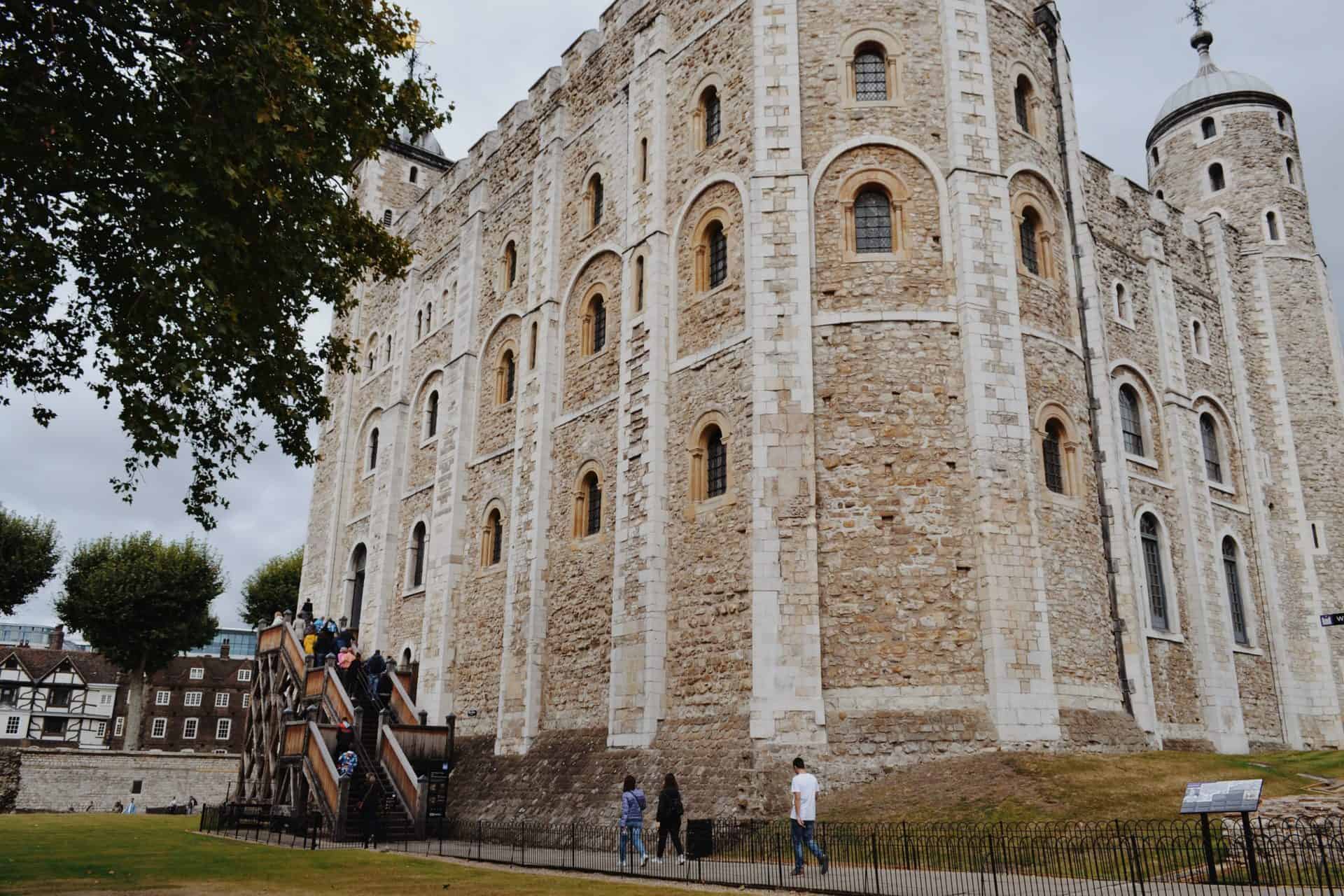
Updated On: April 20, 2024 by Ciaran Connolly
England has an abundance of famous monuments and landmarks, all of which mark significant events in history. Whether joyful or tragic, these events certainly shaped the importance of many of these monuments and increased the interest of tourists in exploring them and learning more about their history. Among these monuments is the Tower of London.
Once considered among the royal palaces, the Tower of London is most known as a political prison and a place of execution. Its history goes all the way back to William I the Conqueror who began to erect fortifications on the site immediately after his coronation on Christmas 1066.
The complex consists of the White Tower, also known as the Bloody Tower, the Beauchamp Tower, and the Wakefield Tower surrounded by a moat, originally fed by the Thames but has been drained since 1843. The only entrance to the complex from land is at the southwest corner. However, in the 13th century, when the river was still a major highway in London, the water gate was used quite often. It was nicknamed Traitors’ Gate, because of the prisoners brought through it to the Tower, which was used as a prison at the time.
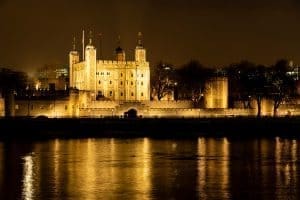
A Royal Residence or a Prison?
While its history as a prison is quite well-known, not many know that the Tower of London was a royal residence as well until the 17th century.
In the Middle Ages, the Tower of London became a prison and place of execution for politically related crimes, and among those killed were the statesman Edmund Dudley (1510), the humanist Sir Thomas More (1535), the second wife of Henry VIII, Anne Boleyn (1536), and Lady Jane Grey and her husband, Lord Guildford Dudley (1554), among many others.
Other well-known historical figures who were held as prisoners in the Tower included Princess Elizabeth (later Queen Elizabeth I), who was briefly imprisoned by Mary I for suspicion of conspiracy; the conspirator Guy Fawkes; and the adventurer Sir Walter Raleigh. Up until World War I, several spies were executed there by firing squad.
On average, the Tower of London receives two to three million visitors every year, and they go on guided tours led by the yeoman warders in their Tudor uniforms.
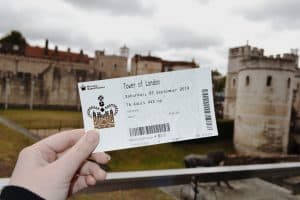
Considering the large number of imprisonments and executions carried out at the Tower of London, it should come as no surprise that many rumors surround the history of this famed monument. Over the years, there have been many who have claimed to have witnessed sightings of some of the notable figures who were once held captive within its walls. This led many historians and even ghost hunters to attempt to explore the area more closely in hopes of discovering the truth behind the many legends that surround its past.
Here are some of the figures that have been rumored to haunt the halls of the Tower of London to this day.
Thomas Becket (Archbishop of Canterbury)
As a close friend of King Henry II, Thomas Becket was appointed as archbishop in 1161. However, the royals at the time were known for their turbulent relationships with their closest circles of friends. So, naturally, the two friends had a falling out when Becket sided with the church over the king on the topic of who would have jurisdiction over the members of the clergy.
Obviously, King Henry felt it was a betrayal and attempted to punish Becket, but the latter fled to France. A few years later, four knights tracked him down and murdered him.
Then how does this relate to the Tower of London?
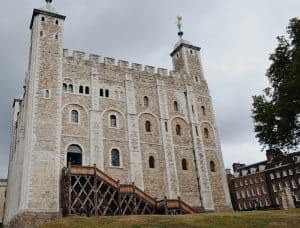
Well, the strange occurrences began years later, during the reign of Henry’s grandson, Henry III, who wanted to erect an inner wall for the compound of the Tower, but it was said that Becket’s ghost was spotted by the workers destroying the wall with a massive cross. Archbishop Becket continued to make an appearance for weeks and whenever they tried to rebuild the wall, he would knock it back down. So, in an attempt to pacify the angry ghost, a chapel was built in his honor. This seemed to pacify him and his ghost never appeared again.
The Princes in the Tower
In 1483, King Edward IV died unexpectedly, leaving behind two heirs to the throne; his sons Richard and Edward V, but they were only 9 and 12 years old, respectively. The deceased king’s brother, Richard III, appointed himself king until one of the boys was old enough to. Instead of looking out for his nephews, Richard III imprisoned them in the Tower of London., and although his political opponents disapproved of his actions, they were powerless to stop him.
Richard III convinced everyone that both of the princes were illegitimate heirs, and he was able to fully usurp power and keep the throne for himself. The tragedy occurred when one day, the young boys disappeared from the Tower without a trace, and no bodies were ever discovered.
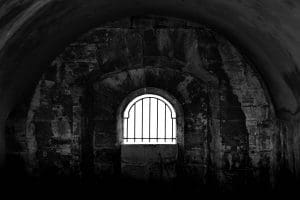
The members of the court were too terrified for their safety and so they did nothing, and Richard III’s reign continued. It took decades for the boys’ bodies to be discovered, but eventually, two small skeletons were excavated in a secret stairwell compartment during a renovation.
Before their bodies were unearthed and sometimes even to this day, people claim to have seen the ghosts of the two young princes, wandering the halls in white nightgowns. It’s said that they always appear to be lost, searching for something.
Can you imagine a fate more tragic?
Anne Boleyn, Henry VIII’s Second Wife
Perhaps one of the most famous ghosts or spirits that are said to haunt the halls of the Tower of London is that of former Queen Anne Boleyn, the second wife of King Henry VIII. Although Anne Boleyn managed, against many odds, to win the coveted title of Queen of England, it did not protect her from meeting a tragic fate.
Anne Boleyn came to Henry VIII’s court as one of his first wife Queen Catherine’s ladies-in-waiting, but the king soon fell in love with her after his first marriage had gone awry due to his wife’s failure to produce a male heir. Anne refused his advances, saying that she would not become his mistress. So, Henry had his marriage to Catherine annulled, citing several reasons, including the fact that she was his older brother’s wife, which in the eyes of the church makes their marriage forbidden.
Soon after, Henry VIII married Anne Boleyn. Unfortunately, her time as Queen was cut short. When she also failed to produce a male heir, she was accused of committing adultery and treason and imprisoned in the Tower of London before being beheaded at the chapel of St. Peter ad Vincula, where she was buried.
Legend has it that since then, she has been seen haunting the Tower of London, walking in the gardens late at night, holding her head at her side.
Margaret Pole (Another Victim of Henry VIII’s Wrath)
Margaret Pole, Countess of Salisbury, was the niece of two kings: Edward IV and Richard III. She was also related to Henry VIII, who was the son of her first cousin Elizabeth of York. However, this familial relation did not help her cause at all later on.
In the mid-1500s, Margaret’s relationship with the crown became strained because Margaret supported Catherine of Aragon (Henry VIII’s first wife and her daughter Princess Mary). This strain was further exacerbated by her sons’ relationship with Edward Stafford, the Duke of Buckingham, who was executed for treason.
Margaret’s son Reginald spoke out against the King, but he managed to escape to Italy first. The rest of the family were not so fortunate as they didn’t manage to escape in time. Geoffrey and Margaret Pole were arrested, and Margaret was transferred to the Tower of London. She spent two years in imprisonment before she was executed in 1541.

Brave to the very end, it is said that when Margaret was confronted by the executioner, she refused to kneel. However, this caused the gathered crowds to jeer, which set the axeman on edge, and led him to miss Margaret Pole’s neck, plunging the blade into her shoulder instead. In severe pain and shock, Margaret ran around the Tower of London’s courtyard, screaming with the executioner at her heels trying to finish the very gruesome task, until he finally managed to do so.
Many people have claimed to have witnessed her ghost reenacting her horrible demise, screaming out for help, which must be a chilling sight.
A Haunted Suit of Armour
The Tower houses display many objects and exhibit some of which have been moved to other museums, but one item, in particular, remains where it is, probably because many are reluctant to touch it. The item is the armour once worn by King Henry VIII.
At first glance, the suit of armour may appear completely normal, similar to any attire worn by knights and kings of the time. Nonetheless, this particular suit of armour is said to be haunted. Many employees and visitors to the Tower of London have reported feeling the temperature around the armour to be much colder, even in the middle of summer.
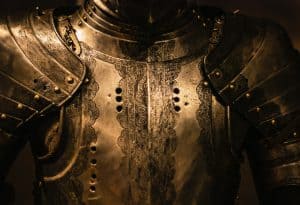
So far, it may seem normal, but several guards tasked with protecting the suit have said that they’ve been attacked by invisible forces, causing a strangling sensation around their necks until they’d almost lost consciousness. One guard even said he felt an invisible cloak thrown over his body and then twisted like he was being strangled, leaving red marks around his neck.
In an attempt to resolve the situation, the Tower management moved the armour to different areas around the compound, but the problem remained and reports of the haunted suit of armour continued.
The Ghost of Jane Grey, the Nine Days’ Queen
The 1550s were a turbulent time in English history as battles raged over the throne as King Edward VI neared his deathbed, but before he passed, he had named the similarly devoutly Protestant Jane Grey as his successor, instead of his own sister Mary Tudor. Mary Tudor was successful in claiming her right to the throne and she imprisoned Jane Grey and her husband in the Tower, condemning them to be beheaded.
Multiple reports claim that the couple had been seen wandering the compound, hopelessly lost. Their ghosts usually appear in the days leading up to the anniversary of their death.
In 1957, a newly employed guard had a disturbing run-in with Jane Grey’s ghost. One night, while patrolling the courtyard, he looked up and spotted her headless body walking along the top of the tower. Logically, the guard quit on the spot.
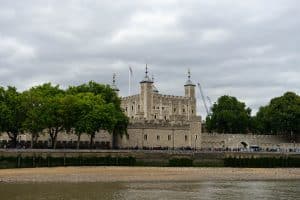
Guy Fawkes Night
One of the most famous assassination plots in British history, the Gunpowder Plot is still commemorated to this day around England.
In 1605, a man named Guy Fawkes carried out a plot by leading a resistance group against the Protestant King James. Fawkes attempted to blow up the House of Lords with large amounts of gunpowder and explosives to kill everyone inside in order to install a Catholic queen. However, he was caught before he could successfully carry out this plan and taken to a prison cell in the White Tower, where he was tortured before he was hung, drawn, and quartered.
His screams and calls for help are said to still be heard by both guards and visitors.
To this day, the failure of the Gunpowder Plot is celebrated across England as people light bonfires in an annual commemoration every 5th of November.
Guy Fawkes’ character has even been replicated in modern films, inspiring the character of V from the film V for Vendetta.
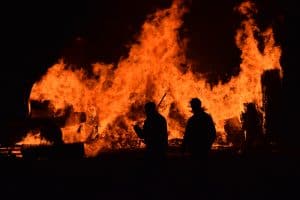
Animal Ghosts
Aside from being used as a royal residence for some time, before being converted into a prison, the Tower of London was also home to exotic animals and pets for some time in its history. In the 1230s, Henry III was gifted three lions from the Roman Emperor Frederick II. He decided that the Tower of London was a suitable place to keep the animals.
Sadly, the cramped conditions resulted in many animals dying, but that didn’t stop multiple generations of kings and queens from storing and housing their big game there, such as tigers, elephants, and bears, transforming the Tower into a zoo for all intents and purposes. However, due to the deaths of several zookeepers, guards, and visitors, the zoo was eventually shut down in 1835.

But the story does not end here. Due to the tragedies that befell the zoo and the multiple incidents that occurred there, many stories have circulated of paranormal activity; this time including animals. Reports came from patrolling guards of a barrage of stampeding undead horses with glowing red eyes. People walking by the Tower at dusk have also claimed to hear lions roaring till today.
Another guard reported that a shadow chased him up a staircase until he reached an office, and locked the door, but the shadow sneaked under the door and transformed into an enormous black bear. Terrified for his life, the guard attempted to stab the bear with his bayonet. However, nothing came of it. The bear looked down nonchalantly at the man and then slowly disappeared. It is said that the man died of a heart attack two days later.
Do you Believe the Ghost Tales?
Throughout its thousand-year history, the Tower of London has housed a multitude of occupants, some of whom still walk among us, if the stories and legends are to be believed. The Tower has become a popular landmark among tourists nonetheless, but the myths and legends that have circulated for years and years and captured the imagination of the world will not soon disappear from our minds.
We’ll likely never know for sure if these legends are based in reality or if they can be explained by natural phenomena, but would you venture a visit to the famously haunted Tower of London? What would you do if you happened upon the specter of an undead King or Queen? Are you brave enough to find out?
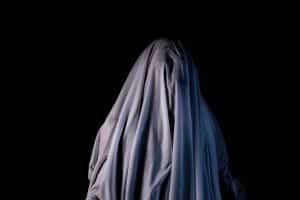
Check out these other tales of haunted places: Loftus Hall, Wicklow Gaol, Leap Castle, Ballygally Castle Hotel






